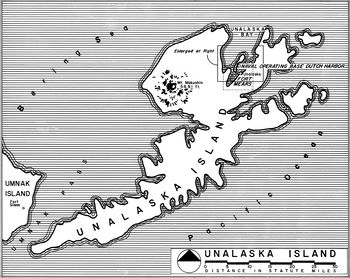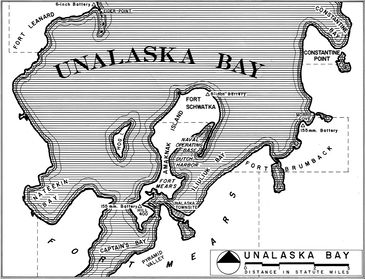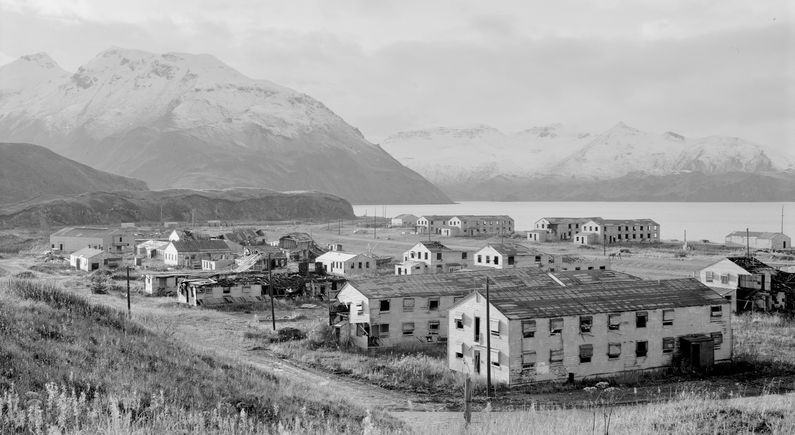Fort Mears
|
Fort Mears (1941-1945) - A World War II U.S. Army Coastal Fort first established in 1941 in Dutch Harbor, Aleutians West Census Area, Alaska. Named Fort Mears on 10 Sep 1941 after Colonel Frederick Mears, who helped develop the Alaska Railroad system. Abandoned in 1945.
World War II (1941-1945)Part of the Harbor Defense of Dutch Harbor. Dutch Harbor was a protected harbor in Unalaska Bay on Amaknak Island in the Aleutian Islands. Unalaska Bay was formed at the northern end of the much larger Unalaska Island. The Harbor Defenses of Dutch Harbor concentrated their large caliber guns on the entrance to Unalaska Bay. AMTB Batteries protected the Dutch Harbor entrance. 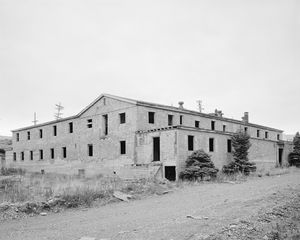
Fort Mears served as the headquarters and garrison for the coastal defenses of Dutch Harbor and they established a number of garrisons to support the Army functions around the island and to place it's personnel closer to the coastal gun batteries under construction. The Navy section was concerned with port operation facilities, a sub-base, and an air operation mission that included seaplanes and later a small airstrip. Coast Artillery units initially manned two batteries of 155mm GPF guns, four guns per battery. One battery was located at the south end of Amaknak Island on what was known as Hill 400 and the second battery was located at Ulakta Head on the north end of the island on what would become Fort Schwatka.
In June of 1942 Dutch Harbor was attacked by Japanese forces in a battle that lasted for two days. The battle began on 3 Jun 1942 with air attacks on Dutch Harbor. U.S. casualties included 43 killed. On 11 Aug 1942, the Army decided to turn the co-located portions of Fort Mears over to the Navy and the Navy agreed to have the Seabees construct new facilities for the Army further south on Unalaska Island. Construction took some time, and the last of the army personnel did not leave the colocated areas on Amaknak Island until March 1944. The new location retained the Fort Mears name. Sometime after the relocation of Fort Mears to the south started, the Army batteries and garrisons on the northern end of Amaknak Island became physically isolated from Fort Mears and those facilities including Battery 402 were then organized into what became Fort Schwatka. The facilities and the 155mm battery on Hill 400 remained a part of the new Fort Mears. 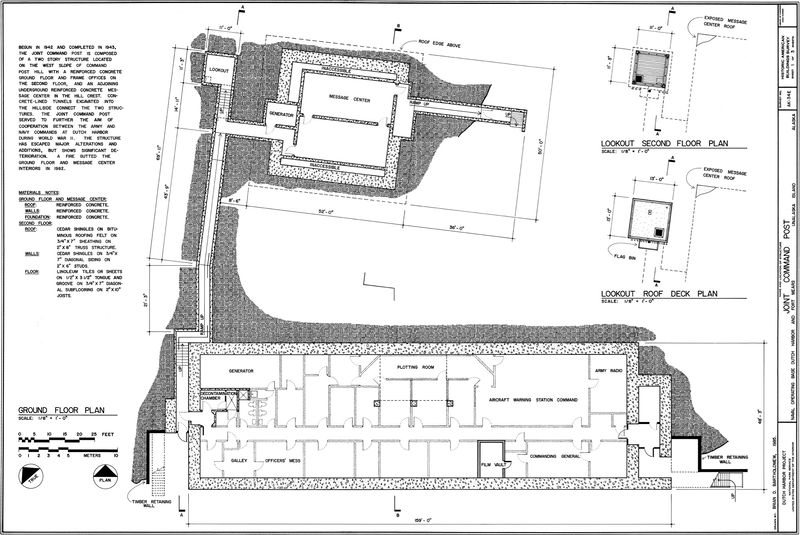 The new Fort Mears post headquarters was constructed on Valley View, a plateau 200 feet up Unalaska Ridge on the south side of Unalaska Valley. The new headquarters included two 2-story buildings for administration and command post operations, officers' quarters and mess, enlisted mess, and cabanas for enlisted housing, and, on the edge of the plateau, two-story quarters for the commanding general. In Pyramid valley, also on Unalaska Island, a 500-bed Army hospital, a dock, and housing for two infantry companies were built. In June 1943, when Fort Mears' strength was declining because of action farther west in the Aleutians, Pyramid Valley was abandoned except for the hospital. At Captains Bay, an army dock, warehouses, sheds, and storage areas were completed in June 1943. The new dock was 760 feet in length and could handle two ships simultaneously. This facility reflected Unalaska's new role as a supply base for installations farther west. Fort Mears was abandoned at the end of the war.
Current StatusSome remains in Dutch Harbor, Aleutians West Census Area, Alaska.
See Also: Sources:
Visited: No
| ||||||||||||||||||||||||||||||||||||||||||||||||||||||||||||||||||||||||||||||||||||||||
